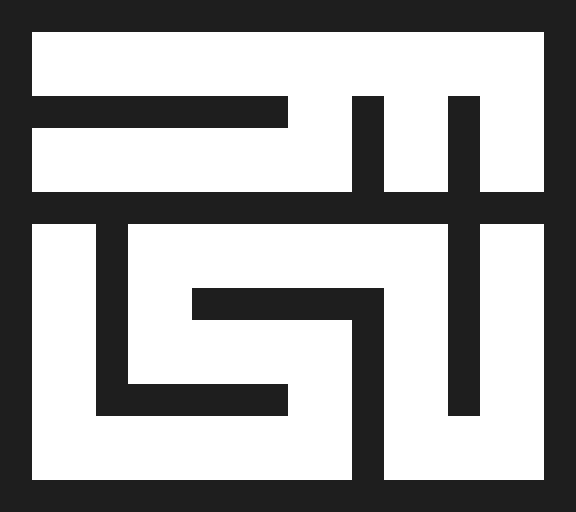There are a lot of words in Standard Tibetan that are very common in speech but are rarely taught (or rarely emphasized) to students. This can make it hard for students to understand Tibetan speech, even after finishing one or more textbooks on the language.
(དེ་)ལ་ཡ(ང)་ (te)laya: to, at, for (that)
- This means the same thing as ལ་ by itself. Really, all Tibetan particles should be translated however is most natural in English, which depends on the verb of the sentence. Many of the examples below use verbs of speech with the argument structure Xལ་Yཟེར་, which means “X is called Y”. The ལ་ in this type of sentence is grammatically required in the Tibetan, but is not needed in the English translation.
- e.g. At 0:34 of this video, she says: ལུས་ལ་ཡ་དབྱིན་ཇི་སྐད་ཐོག་ལ་bodyཟེར་དགོས་རེད། (“ལུས་ is called ‘body’ in English.”)
- e.g. at 0:02 of the same video, she says དེ་རིང་ལྷན་རྒྱས་ལ་ཡ་ནང་ཆོས་ཀྱི་ཐ་སྙད་སྒོ་གསུམ་དབྱིན་སྐད་ནས་ག་འདྲས་སེ་ཟེར་གྱི་ཡོད་མེད་དེ་ངོ་སྤྲོད་ཞུ་ཡ་ཡིན། (“Today I will introduce to you all how to say the Buddhist term སྒོ་གསུམ་ in English.”)
མཚམས་པ་ tsampa
- This word seems to be pleonastic, which means that it has no specific meaning and is just a style of speech. It is used after the word དུས་, which means “when”.
- e.g. At 0:11 of this video, she says: threeཟེར་དུས་མཚམས་པ་ལ་གསུམ་དང་། doorsཟེར་དུས་མཚམས་པ་ལ་ཡ་སྒོ་ཟེར་དགོས་རེད། དོན་དུ། སྒོ་གསུམ། (“When three is said, [it means] གསུམ་, and when doors is said, it means སྒོ་. It means སྒོ་གསུམ་ (‘three doors’).”)
འདུག་སེ་ du(k)s
- This means “in this way” or “like that”. It is generally used before giving a definition or example. It often functions as a bit of a filler word that can be left out of translation. I translate it below as “thusly” just to highlight its presence in the sentence.
- e.g. At 0:25 of this video, she says: སྒོ་གསུམ་ལ་ཡ། འདུག་སེ། three doorsབྱས་བྱས་བེད་སྤྱོད་གཏང་གནང་གི་འདུག (“Saying thusly ‘the three doors’ is used for the སྒོ་གསུམ་.”)
- བྱས་བྱས་ consists of the verb བྱས་ followed by the conjunction བྱས་. The verb བྱས་ is best known as the verb meaning “to do”, but it is also verb of speech, as seen in phrases like ཞེས་བྱ་བ་ (“That which is called ‘…’”). The conjunction བྱས་ is a colloquial way of saying ནས་, as introduced in Lesson 9 Section 3.2. So, altogether བྱས་བྱས་ means something like “saying [word]”, or to put it in more familiar terms, they are used like the English phrase “the word [word]”. So, we could translate the above sentence more naturally as “The words ‘the three doors’ are used for the སྒོ་གསུམ་.”
འདྲ་པོ་(ཅིག་) dra(p)o (chik)
- འདྲ་པོ་ means “like” and འདྲ་པོ་ཅིག་ means “something like”.
- At 2:28 of this video, he says: སེང་ཁྲི་ཀྱི་སྒང་ལ་ག་རེ་ཡོད་ཞུས་པ་ཡིན་ན། ད་ཡང་རིམ་པ་གསུམ་འདྲ་པོ་ཅིག་ཡོད་རེད། (“What’s on top of the lion throne? Here too there are something like 3 levels.”)
ཆགས་བསྡད་ cha-de
- This is a be-verb, meaning “is”, “are”, “was”, “were”, and so on. It takes normal verbal conjugation.
- At 2:59 of this video, he says: ད་འདིའི་དུས་སྐབས་སུ། སློབ་མ་མང་པོ་ཅིག་ཡོད་པའི་ནང་ལོགས་ནས་སློབ་མ་ཅིག་འདི་རྗེ་བཙུན་འཇམ་དཔལ་དབྱངས་ཆགས་བསྡད་ཡོད་རེད། (“Now, at this time, among the many students that were present was this student, Jetsun Jampeyang [i.e. Manjushri].”)
ད་ག་ནང་བཞིན་ ta(g)a nangshin
- This means “similarly” or “likewise”. In practice, it is often closer to “also”.
- e.g. At 0:17 of this video, she says: ད་ག་ནང་བཞིན་སྒོ་གསུམ་ལ་ཡ། ཨ་ནི། ཁ་ཤས་ཀྱིས། ཡང་། དེ་རིང་། gatesཟེར་བྱས་དེ་འདྲའི་ཡང་བེད་སྤྱོད་བཏང་གནང་གི། ཡིན་ནའི་མི་ཕལ་མོ་ཆེ་གིས་སྒོ་གསུམ་ལ་ཡ། འདུག་སེ། three doorsབྱས་བྱས་བེད་སྤྱོད་གཏང་གནང་གི་འདུག (“Also, some people nowadays also refer to the three doors as using something like [the word] gates. But most people use [the word] three doors for the སྒོ་གསུམ་.”)
- Verb conjugations in {གི་}འདུག་ are often abbreviated to just {གི་}, as seen here with བེད་སྤྱོད་བཏང་གནང་གི་.
- ཨ་ནི་ is a very common filler word.
- ཟེར་བྱས་ and བྱས་བྱས་ both consist of a verb of speech followed by the word བྱས་, which is a colloquial way of saying ནས་, as introduced in Lesson 9 Section 3.2. The verb བྱས་ is best known as the verb meaning “to do”, but it is also verb of speech, as seen in phrases like ཞེས་བྱ་བ་ (“That which is called ‘…’”).
བྱས་བྱས་དེ་འདྲས་སེ་རེད། che che tendres re
- This comes after a word you’re defining, and essentially just means “means” or “is called”. Literally, it means “saying [quoted word] is like that”.
- e.g. At 0:46 of this video, she says: ཡིད་ལ་ཡ། mindབྱས་བྱས་དེ་འདྲས་སེ་རེད། དོན་དུ་ལུས་ངག་ཡིད་གསུམ་པོ་དེ་ལ་ཡ་དབྱིན་སྐད་ཐོག་ནས་body speech and mindབྱས་བྱས་དེ་འདྲས་སེ་རེད། (“ཡིད་ is called ‘mind’. So, the three of ལུས་ངག་ཡིད་ are called ‘body, speech and mind’ in English.”)
